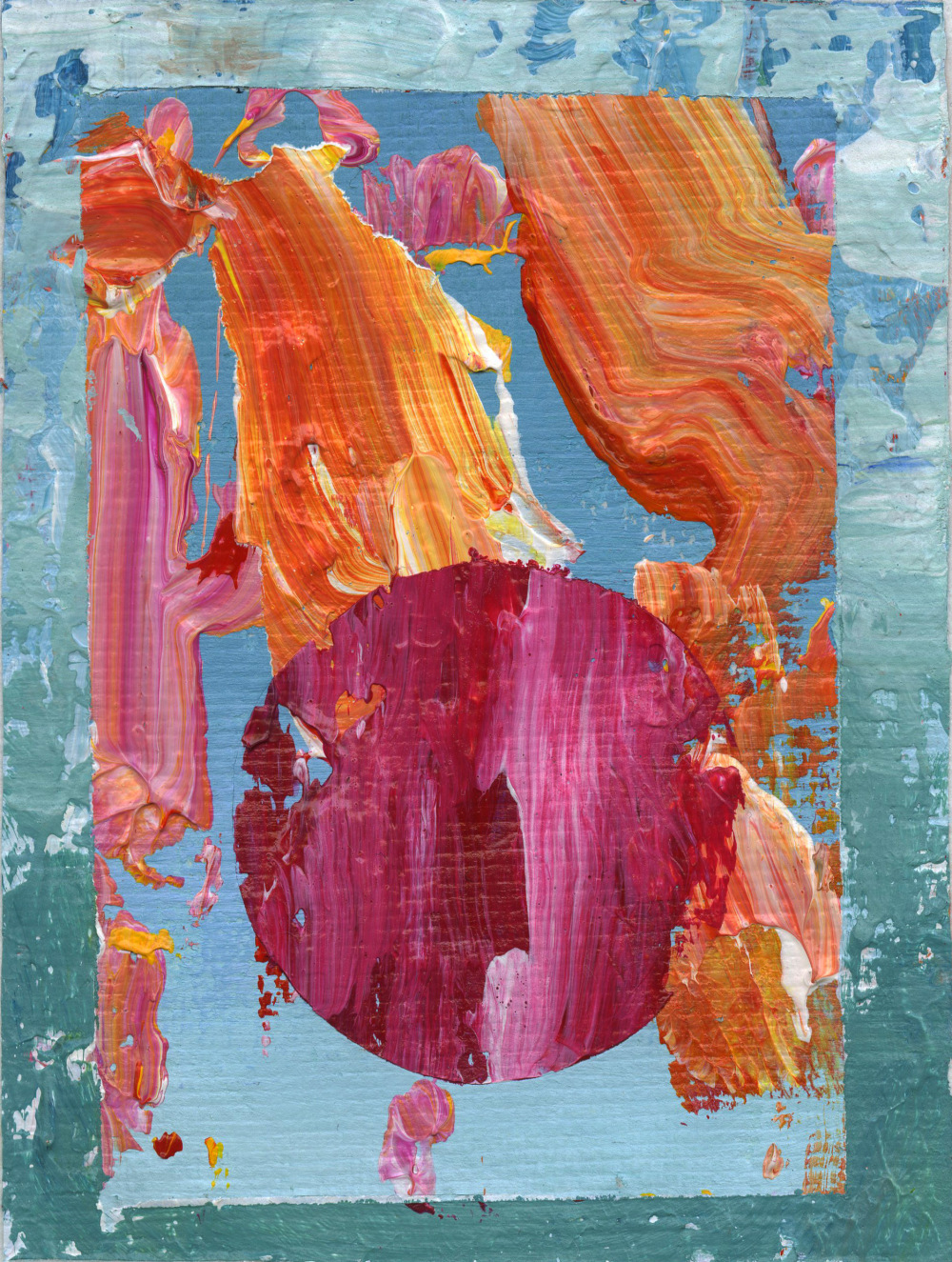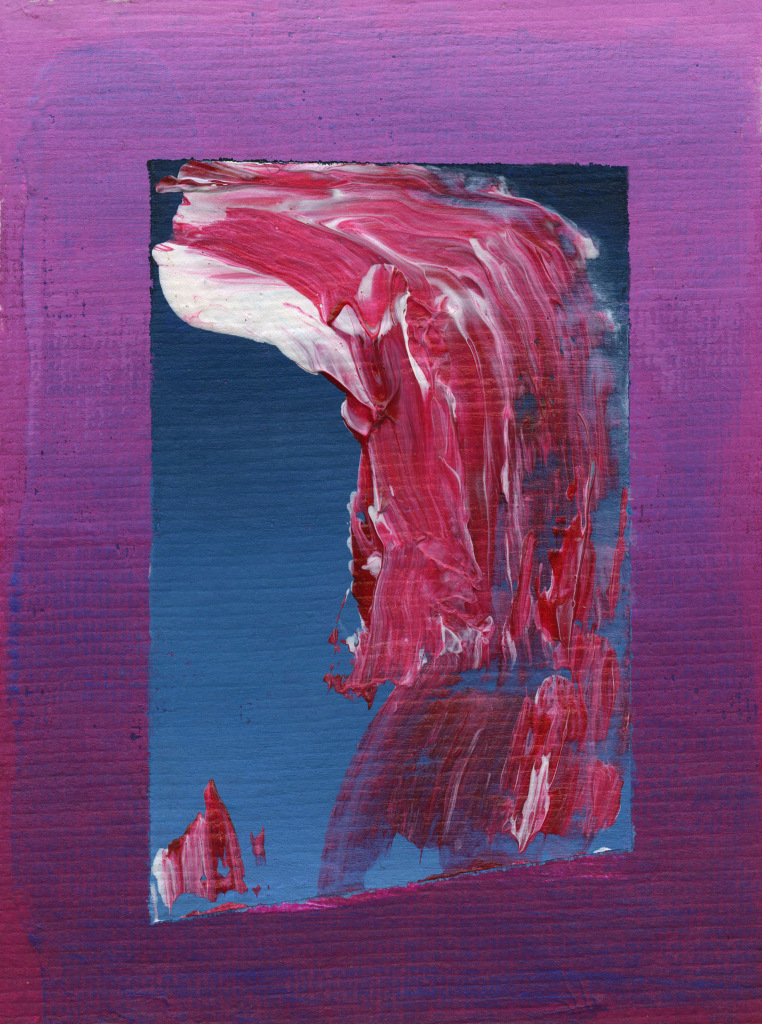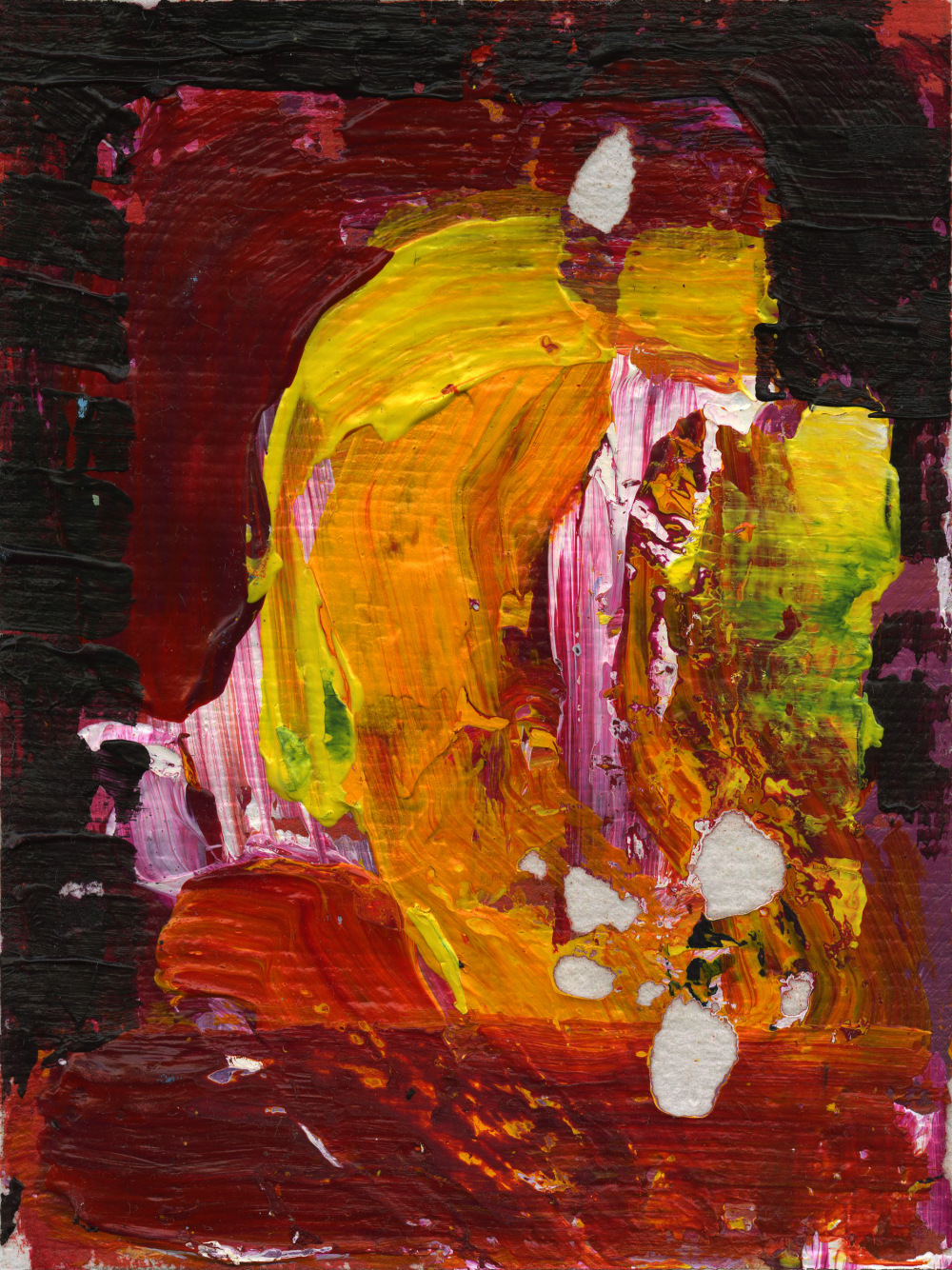Sasha Zirunilk’s debut solo show, Young Hearts Run Free, at Nationale in Portland, Oregon (running from November 19 - December 27, 2020) is a quietly raw and powerful meditation on amorous love, the self, the natural world, and the vast, unknown space of the future. The show’s title, aptly drawn from Candi Staton’s 1975 disco release of the same name, evokes the powerful resiliency and inner growth born from the “trouble and strife” that comes along with young heartbreak.
Running throughout Young Hearts Run Free is the sense of a strong narrative arc; however, piecing it together requires viewers to observe each and every work’s motifs and a consequent rollercoaster of emotions -- from moments of joyous, utopian pleasure and love to intense, inescapable feelings of loss and dread. Split between sculptures -- variously made from a combination of plaster, cement, wood, glue, found objects (both industrial and natural, in the case of seashells), and human hair -- and oil paintings, the works in the show (all produced in 2020) demonstrate Zirulnik’s playful and tactile exploration of materiality as a means of evoking an emotional response. While explicitly working within self-portraiture, Zirulnik’s figures are ambiguous enough for viewers to place themselves in each scene, and experience the artists’ complex, and often simultaneous, emotions of hope, expectation, loss, introspection, and renewal.
Nestled prominently on the wall behind the front desk, I encounter a pair of self-portraits graphically rendered in red and soft pink oil paint on canvas. This wall divides Nationale into two airy, light filled spaces: a book-object-record store in the front and the gallery in the back. Both paintings, Back of My Head and Long Ago, Far Away, feature soft, deep red foregrounds delineated from a lighter pink sky with cartoonish white clouds by a horizon line. A nondescript figure with thick black hair, holding a strong representational similarity to the artist’s own image, stares at the vast, open space ahead, simultaneously evoking an alternating sense of excited anticipation and dread for what lies ahead. Incidentally, the figures' gaze into the gallery space and lead me into the rest of the show.
Entering the space, I’m confronted by a low, rectangular pedestal displaying a row of four small sculptures -- each of which employ found objects as their base, and given form using plaster and/or cement and dirt, and finally adorned with seashells. Growing up going to thrift stores with her father, Zirulnik says he passed along a love of and ability to “find beauty and worth in secondhand objects and random ass chachkis.” She has also found this passion in the natural world -- most recently, the Rockaway beaches along New York’s coast -- where the artist has been especially drawn in the summers. In the show’s press release, Zirulnik says, “I choose to work with seashells because they symbolize life, death, and the natural world in which our ties to nature have become increasingly frayed.” Perhaps most representative of this sense of pleasure in the odd castoffs of industrial culture can be found in For Dali, which takes for its base a white, plastic candle holder with three columns which Zirulnik has flipped upside down. In doing so, she has turned the columns (reminiscent of skinny chicken legs, in my eyes anyhow) into a support for a seashell covered plaster mound which, when viewed from above, a face -- made up of two closely-set brown eyes on a butterfly and soft pink lips on a seashell -- looks back. Its expression is hard to place (and also hard not to smile and giggle at, perhaps nervously), and feels as though it’s peering into your soul without judgement or expectations. In fact, the figures in every sculpture and painting in the show appears to look past and ignore the viewer, as a side effect of their total immersion and focus on their own world.
The pedestal presents a fork in the road and invites (or forces, depending on your take…) a decision: to go left or right. Choosing the former, I come upon The Daydream, a large vertical painting depicting a solemn, brooding figure -- presumably Zirulnik -- who takes up the bottom right corner and emanates a dark, black cloud. In the upper left area, two swiftly illustrated figures, tucked into a voluptuous red bed, passionately kiss. Surrounding the figures are free floating orange Brugmansia (also known as Angel’s Trumpets due to their unusual shape), which are commonly understood to represent vitality and vibrancy. As part of the nightshade family however, they are known to have slightly toxic, poisonous, and hallucinogenic properties. In An Encyclopedia of Shamanism, the author Christina Pratt notes that “Brugmansia induces a powerful trance with violent and unpleasant effects, sickening after effects, and at times temporary insanity.” This admixture of intensity and passion with toxicity and deliriousness are not-infrequent side effects of amorous love, and the piece subtly foreshadows the arc of the Zirulnik’s young love.
Positioned directly across from this powerful, layered depiction of blissful, yet foreboding love is I Have Angels Guiding Me, a fleshy-pink bust made from cardboard, chicken wire, plaster, and human hair. With her chin raised high and gaze directed slightly upward, the sculptural self-portrait features a prominent nose, seashells for ears, and Zirulnik’s own thick, curly brown-black, shoulder-length hair: an abject, physical representation of the figure repeated throughout the show. A metal, trumpet-holding angel, weathervane affixed atop the figure’s head points in the same direction as the figure’s gaze. This angel confidently and cheerily hovers above the figure as though it were protecting and celebrating her as they guide her forward. Without viewing this piece in the round, viewers might miss a quiet moment on the sculpture’s backside: a figure on the left flank gazes towards New York City’s iconic, triumphant Statue of Liberty. Behind the bust, in The Path, one of the show’s smallest oil paintings, loose, quick brushstrokes portray a dark winding path leading over and through rolling yellow hills, bringing to mind the golden landscape of the artist’s native California. Growing up in San Francisco and later graduating from San Francisco Art Institute with a BFA in Sculpture, Zirulnik moved to New York City in 2017 for a fresh start -- perhaps, this piece would suggest, with the guidance of angels.
Continuing to circumnavigate the space, I come to In the Studio, a large, moody and muddy brown-green painting depicting an intricately complex and disorienting space, and quite arguably the showstopper moment for Young Hearts Run Free. In the foreground, a three-quarters profile of the same thick, black-haired figure looking and touches yet another thick, black-haired, fleshy-pink bust on a pedestal depicted in profile, behind which a small black and blue painting -- a miniaturized copy of the piece, Lover (which hangs directly to the right) -- of two figures hangs on a wall. In the dark shadows of the small, black and blue painting, Lover, we can just make out two intertwined figures: a woman with arms raised above her head, while a man holds her tightly while affectionately kissing her. There’s an ominous overtone to this painting, as the bodies convey an uneasy power dynamic that is only quieted by the figures’ calm expressions and locked lips. Overlooking this ricochet of gazes and complicated power relations is the backside of an oversized large, black cat, which has turned its head to ominously peer back at this scene, and subsequently the viewer themselves. I can’t help but be reminded of Zirulnik’s protective, guardian angel and wonder whether they have assumed an animal form to continue to watch over her. Standing in front of the work, the viewer becomes yet another set of eyes in this chain of observation and introspection.
Opposite the gallery’s floor-to-ceiling street-facing windows and hanging alone is the show’s largest painting: Profile. Painted in the same hues as the pairing at the show’s entrance, this work is another variation on a multiple-perspective portrait. This time, four overlapping and rotating figures -- with the furthest left standing in profile and each progressively turning away from the viewer -- until all we see of the last figure is the back of her head. Above the bright red ground, blue skies and thin white clouds provide a brief moment of calm, tranquility, and uplift in between Lover and the final sculpture in the show, Hard Times in New York Town. The latter work pulls its title from Bob Dylan’s song released in 1994 that speaks to the toughness, grit, and hustle required to survive the cutthroat New York City. Atop a narrow pedestal, a gruesome decapitated head -- adorned with the hair of her ex-lover -- is rested upon its left cheek. The plaster and paint construction acts as a mask underneath which seashells have been placed in two negative spaces in the space of the figures' eyes. Positioned at a 45 degree angle, Hard Times in New York Town, looks out at the entirety of the gallery space and surveils viewers as they explore the show. Though perhaps not immediately recognized, the work produces an underlying eerie and foreboding energy that is difficult to shake.
The show’s final two pieces, Left in the Dust and Left in the Dust (Part 2), are a pairing of dark, black and blue atmospheric paintings with soft grey figures staring down seemingly endless roads which only disappear as they approach the horizon line. This imagery that returns again and again in Young Hearts Run Free speaks to Zirulnik’s interest in “figures that are going somewhere or doing something.” In the latter work, the road -- demarcated by a steady rhythm of bright yellow brush strokes -- begins from the bottom center until it fades off into the top right, where a light source beams through streaks of white light highlighting the desperately outstretched arms and face of the figure as it runs towards the light at the end of the tunnel.
After several laps and ping-ponging across the works on view in the gallery, my head is spinning and my heart is racing as I attempt to sift through Zirulnik’s deeply personal and intimate experiences. Through landscape, gazes, and self-portraiture, Young Hearts Run Free reflects upon the future as a space of potential, and embraces its capacity to not only induce dreadful anxiety, but hope, excitement, and the joys of something new. Facing headlong into the unknown of a year marked by continuous change and unstable ground, I can only hope to face what comes next with the courage and resiliency depicted in Zirulnik’s works. Leaving the gallery, I recall the words of Candi Staton quoted in the press release:
It's high time now,
just one crack at life
Who wants to live in,
In trouble and strife
My mind must be free
To learn all I can about me





















